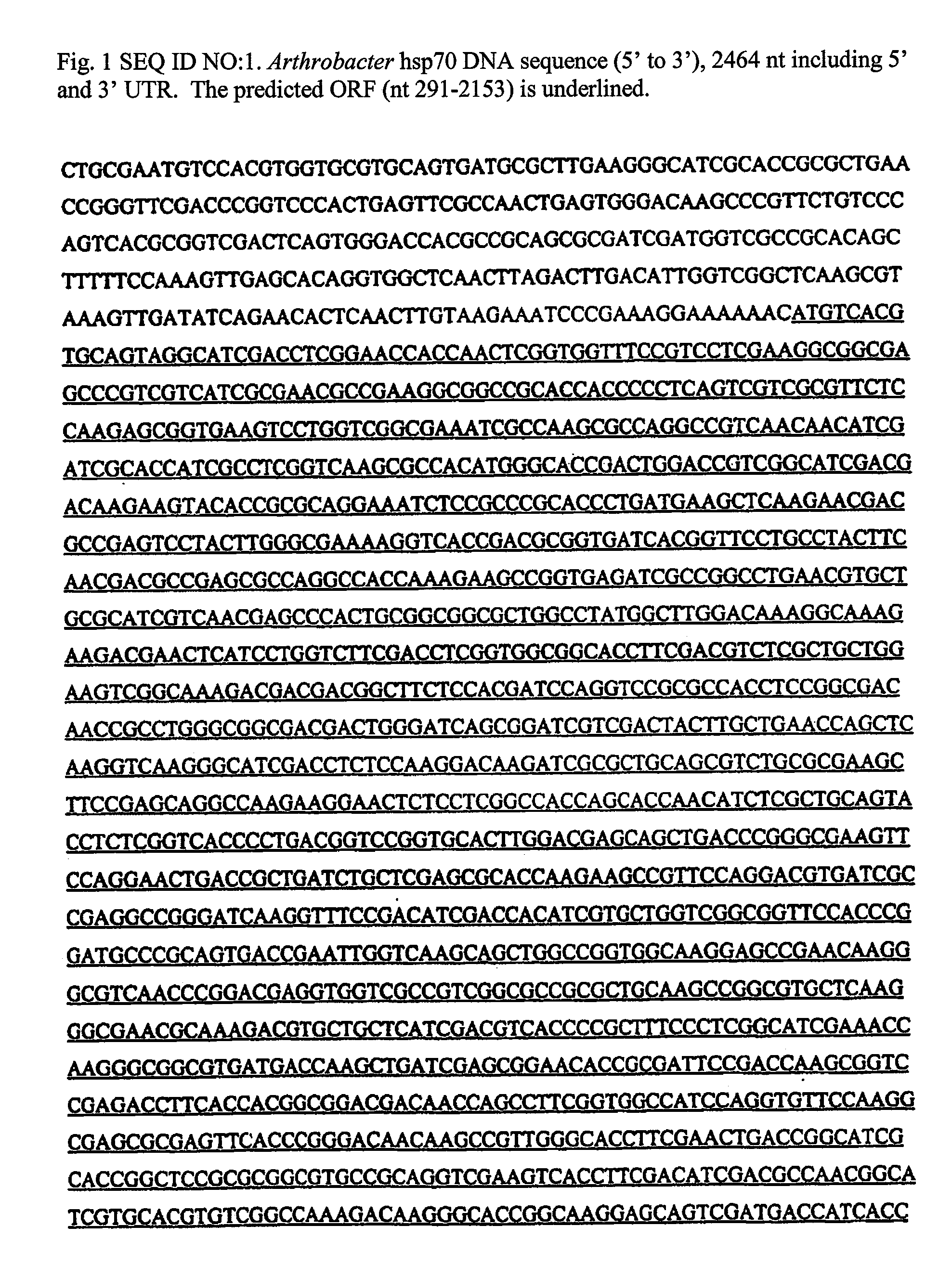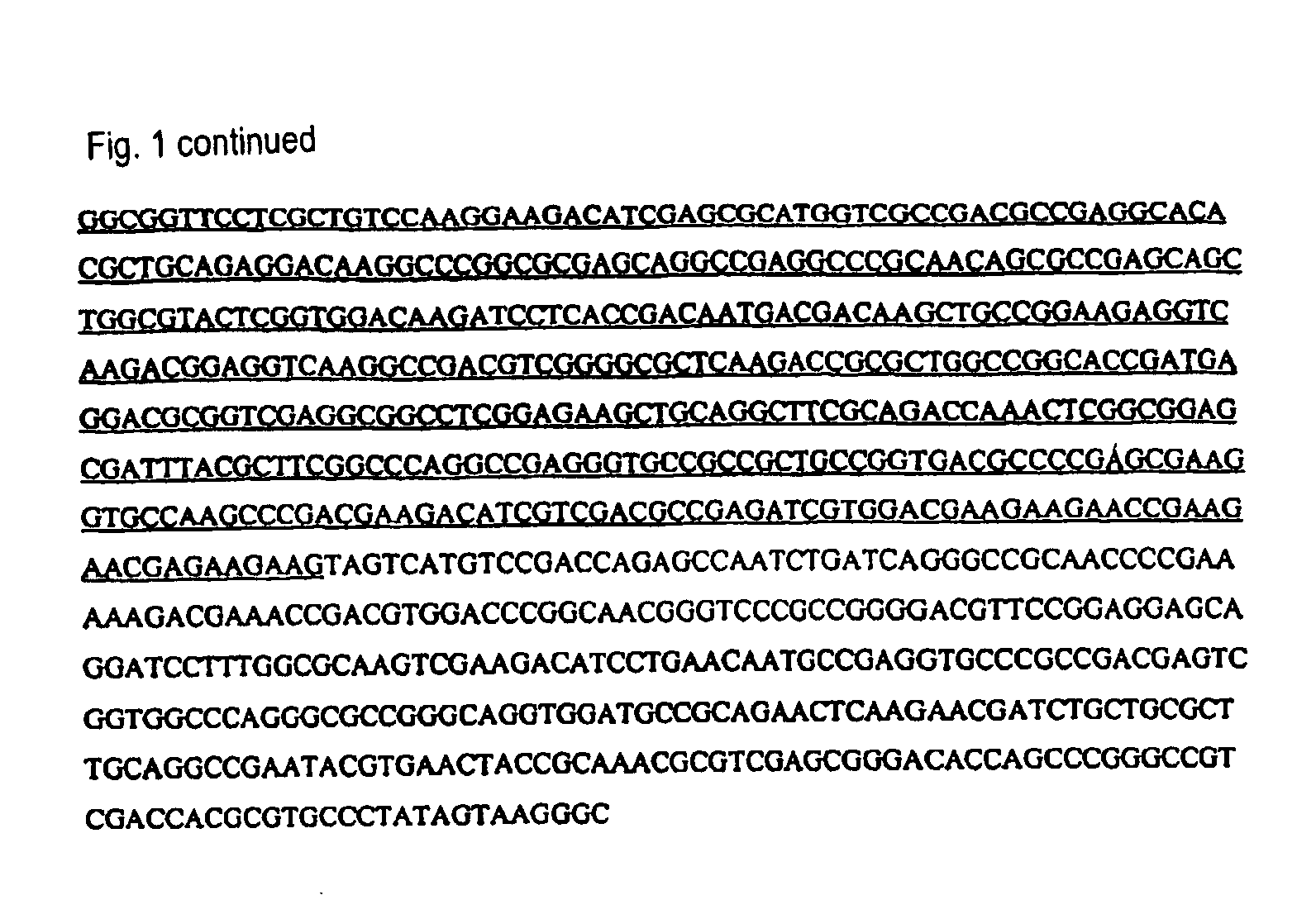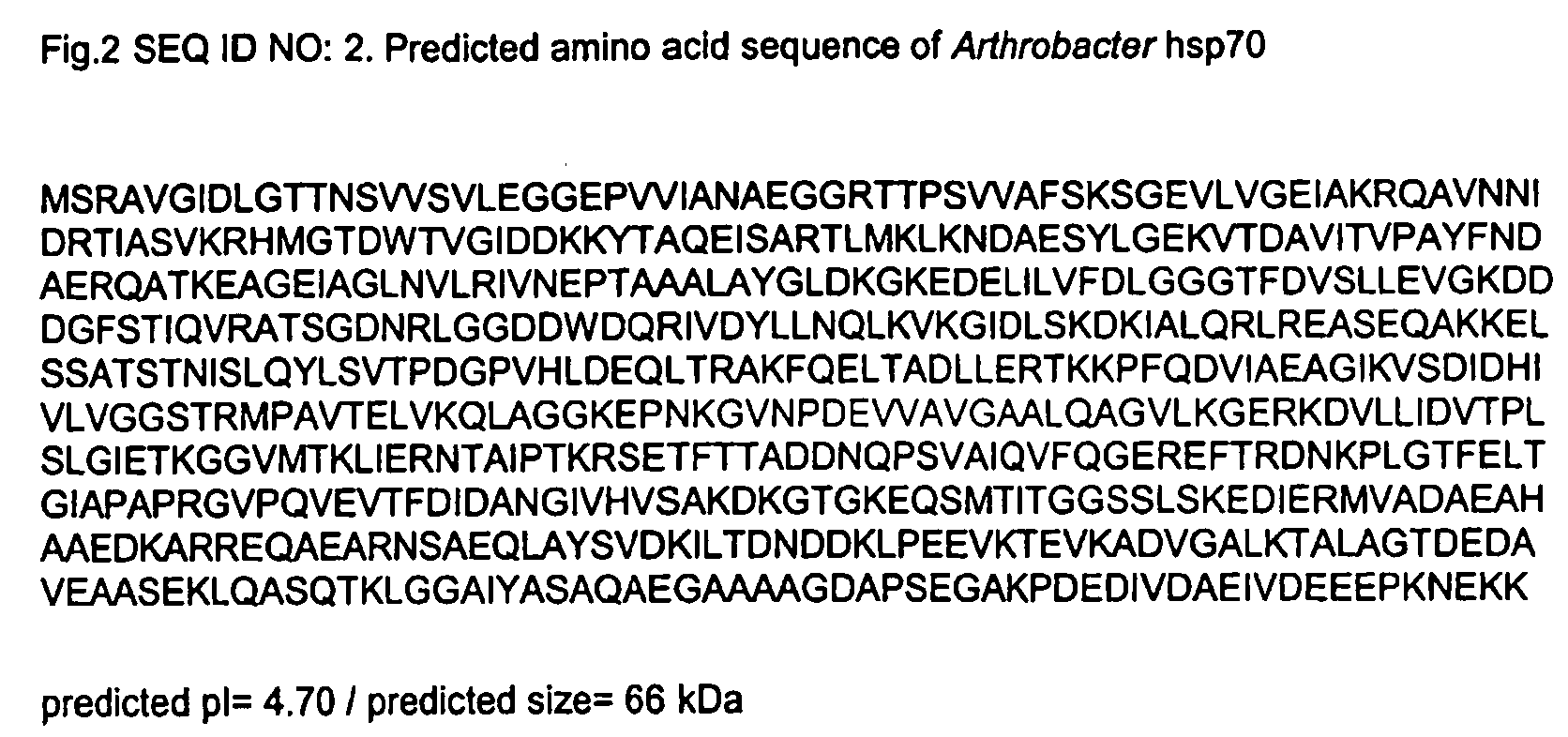Hsp70 from Arthrobacter
a technology of arthrobacter and hsp70, which is applied in the field of hsp70 from arthrobacter, can solve the problems of failure to activate mhc, and achieve the effect of preventing or treating pathogenic diseases
- Summary
- Abstract
- Description
- Claims
- Application Information
AI Technical Summary
Benefits of technology
Problems solved by technology
Method used
Image
Examples
example 1
Isolation and Sequencing of hsp70 Gene from the Genome of Arthrobacter ATCC 55921
[0075]A 5 ml culture of Arthrobacter is grown overnight shaking at 30° C. in LB containing kanamycin (30 μg / ml). DNA extraction is then carried out using the Puregene DNA isolation kit (Gentra) or Instagene™ Resin according to the manufacturer's instructions.
Degenerate PCR
[0076]Areas of greatest similarity between several mycobacterial and streptomyces hsp70 (dnaK) sequences at the nucleotide level are used to design degenerate primers for PCR and sequencing. The selected primers are dnak-1Fdeg (5′-gtcggnatcgacctvggnac-3′) (SEQ ID NO: 4) and dnak-4Rdeg (5′-gcggtsggctcgttgac-3′) (SEQ ID NO: 5). These primers are used for amplification of Arthrobacter DNA in a PCR reaction with a 50° C. annealing temperature. The quality of the amplified DNA is assessed by gel electrophoresis. A 10 μl aliquot is electrophoresed on a 0.8% agarose gel in 1× Tris-borate electrophoresis buffer (TBE) at 100V for about 1 hour. ...
example 2
Characterization of Arthrobacter Cell Wall Proteins
Electrophoresis and Western Blotting
[0084]Arthrobacter ATCC 55921 cell suspensions are prepared by removing subcultured bacteria directly from tryptic soy agar (TSA) plates following incubation for 48 hours at 23° C. Bacteria are resuspended in 10 ml of “TET” buffer consisting of 100 mM Tris-HCl buffer of pH 7.2, 1 mM EDTA and 0.1% Triton-X 100 (BioRad Laboratories, Hercules, Calif.), to an optical density of approximately 50 OD660 units (where 1 OD600 has been estimated to be 1×109 cells), and centrifuged at 6500 g. The supernatant is discarded and the cells are suspended in a further 10 ml of TET and the centrifugation step is repeated. The cell pellet is resuspended in 4 ml of TET and separated as 1 ml aliquots into 1.5 ml microtubes. One of the aliquots is further mixed with 200 μl of 5 mg ml−1 chicken egg white lysozyme and incubated with shaking overnight (18 h) at 37° C. The cell suspension is centrifuged at maximum speed for...
example 3
Recombinant Expression of hsp70
[0090]The complete coding sequence of Arthrobacter heat-shock protein 70 is cloned into the pET30EKLIC vector (Novagen) as a non-fusion and as a fusion peptide. The N-fusion tag consists of 55 amino acids which includes various features to allow further purification of the target protein (included are His tag, S-tag, enterokinase cleavage site). A 200 amino acid active motif located within the HSP70 protein, known as Domain II, is also cloned as a non-fusion and fusion peptide.
[0091]Expression of recombinant HSP70 and recombinant Domain II is performed in E. coli DE3 cells. Once a suitable cell density is obtained, the DE3 cultures are divided into two separate flasks. Protein expression is induced in one of the cultures with the IPTG substrate while the second serves as a control. Both HSP70 and Domain II, expressed as fusion or non-fusion, are principally found in a soluble form in the cytoplasm or associated with the periplasm of E. coli. Thus, in E...
PUM
| Property | Measurement | Unit |
|---|---|---|
| temperature | aaaaa | aaaaa |
| total volume | aaaaa | aaaaa |
| total volume | aaaaa | aaaaa |
Abstract
Description
Claims
Application Information
 Login to View More
Login to View More - R&D
- Intellectual Property
- Life Sciences
- Materials
- Tech Scout
- Unparalleled Data Quality
- Higher Quality Content
- 60% Fewer Hallucinations
Browse by: Latest US Patents, China's latest patents, Technical Efficacy Thesaurus, Application Domain, Technology Topic, Popular Technical Reports.
© 2025 PatSnap. All rights reserved.Legal|Privacy policy|Modern Slavery Act Transparency Statement|Sitemap|About US| Contact US: help@patsnap.com



